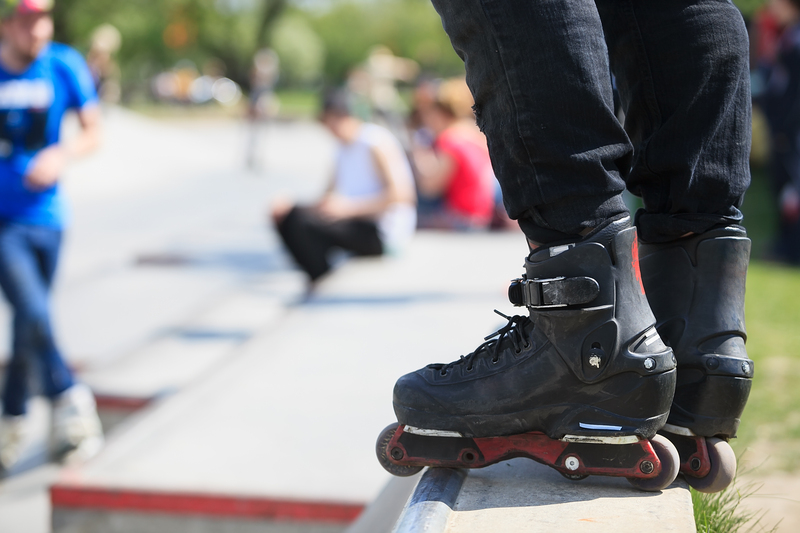The Smart Person's Guide to Moving Heavy Items Alone
Moving heavy items by yourself can be intimidating, but with proper planning, technique, and the right tools, it becomes a manageable task. Whether you're shifting furniture, large appliances, or awkward boxes, knowing how to move heavy objects safely protects both you and your belongings. In this comprehensive guide, we'll show you how smart individuals tackle the challenge of moving heavy items alone--step by step, with expert tips and safety-first strategies.
Understanding the Challenge: Why Moving Heavy Items Alone is Tricky
Moving heavy items alone isn't just about muscle--it's about strategy, equipment, and safety awareness. Professional movers aren't just strong--they use ingenious methods and specialized tools to make the process efficient and safe. As a solo mover, you need to take a similar approach, maximizing your leverage and minimizing the risk of injury or damage. Below, we dive into the secrets of moving heavy things by yourself, smartly and efficiently.

Planning Ahead: The Foundation for Solo Heavy Lifting
1. Assess Your Items and Surroundings
- Determine what items need moving and weigh or estimate their heaviness.
- Measure doorways, hallways, staircases, and elevators to ensure items will fit through.
- Create a clear pathway free of obstacles before attempting any lift.
2. Gather the Essential Moving Supplies
The right equipment is the bedrock of safe and efficient solo moving. Here's what you'll need:
- Dolly or Hand Truck: Essential for large, bulky items.
- Furniture Sliders: Help glide heavy furniture across floors with ease.
- Lifting Straps: Redistribute weight and reduce physical strain.
- Protective Gloves: Guard your hands from blisters or scrapes.
- Moving Blankets or Towels: Protect both items and floors from damage.
- Rope, Bungee Cords, or Ratchet Straps: Secure loads and keep them stable during transportation.
- Measuring Tape: For accurate space planning.
Pro Techniques: Moving Heavy Items Alone the Smart Way
1. Break Down What You Can
Before attempting to move a heavy item, check if it can be partially or fully disassembled. Remove drawers, legs, shelves, doors, or any detachable component. This reduces the overall weight and makes handling easier.
- Take pictures during disassembly for easier reassembly later.
- Use bags or labels to organize screws and small parts.
2. Slide, Don't Lift (Whenever Possible)
The smart person's rule is: "Work smarter, not harder." Use sliders--disks or pads under furniture legs--to glide heavy pieces across floors with minimal effort. This safer method also takes less toll on your back.
- Use plastic sliders for carpet, and felt sliders for hardwood or tile.
- If you don't have sliders, thick towels, cardboard, or even plastic lids can substitute in a pinch.
3. Harness the Power of a Dolly or Hand Truck
For tall, heavy items or multiple stacked boxes, nothing beats a hand truck or appliance dolly. Carefully tilt the item, slip the bottom lip under it, and use the wheels to roll the load to its destination.
- Ensure items are centered and secured with straps to avoid tipping.
- Wear gloves for a firm grip and finger protection.
- Keep your back straight and use your legs to push, not your arms or back.
4. Use Lifting Straps for Heavy Lifts
- Loop straps properly and follow included safety instructions.
- Start with small lifts before moving to the main object.
5. Apply Leverage and Inclined Planes
Leverage dramatically eases moving. If possible, tilt or pivot an item rather than picking it up full weight. Use ramps or boards to create gentle inclines, so you can roll or slide items rather than lifting them over steps or thresholds.
- Even a piece of strong cardboard works as a makeshift ramp for short steps.
Safety First: How to Move Heavy Objects Without Injury
Protecting yourself is vital when moving heavy items solo. Use these guidelines to minimize risk:
- Warm Up First: Stretch your legs, back, and arms before lifting.
- Dress Appropriately: Wear supportive shoes, close-fitting clothes, and gloves.
- Lift with Your Legs, Not Your Back: Bend at the hips and knees, keep your chest forward, and rise using your leg muscles.
- Keep Loads Close: Hold objects close to your torso for better balance and leverage.
- Avoid Twisting: Move your feet instead of twisting your spine.
- Don't Rush: Pace yourself. If you feel strain, pause and reposition.
- Know When to Stop: If something feels unsafe or too heavy, don't push it--seek assistance.
Protecting Your Home and Belongings During a Solo Move
1. Prepare Floors and Walls
- Lay down moving blankets, cardboard sheets, or runners to prevent floor scratches.
- Use corner protectors and door jamb covers to safeguard walls and frames.
2. Secure Loose Parts and Fragile Items
- Remove or tie up cords, shelves, or swinging components.
- Cushion sharp corners to prevent nicks or gouges in walls.
3. Be Mindful of Pets and Kids
- Keep children and pets safely out of the work area to avoid distractions or accidents.
Special Tips for Moving Different Types of Heavy Items Alone
Moving Large Furniture
- Sofas/Loveseats: Tip them upright ("Sofa Stand") to reduce width and fit through doorways.
- Dressers: Empty drawers and carry them separately. Use a dolly for the frame.
- Bookshelves: Remove shelves and back panel if possible. Tightly wrap to avoid shifting.
Moving Appliances
- Refrigerators: Remove contents, secure doors, and always keep upright to protect the compressor. Use an appliance dolly with straps.
- Washing Machines/Dryers: Disconnect utilities, drain hoses, and wrap the machine in a moving blanket. Secure drums with transit bolts if provided.
Moving Large Electronics
- Flat-screen TVs: Use the original box or a padded TV-specific moving box. Carry upright and never lay flat.
- Desktops/Monitors: Unplug all cables and wrap components in bubble wrap or towels.
Moving Heavy Boxes
- Don't overpack. Place heavier items in small boxes and lighter items in larger boxes for easier handling.
- Use sturdy boxes, and double-tape bottoms for extra support.
Frequently Asked Questions: Moving Heavy Things Without Help
Can one person safely move a heavy couch, dresser, or fridge?
Yes, with proper equipment and technique. Disassemble or empty whenever possible, use sliders and a dolly, protect floors and doors, and take your time. If the item exceeds your strength or safe handling ability, don't risk it.
What if I don't have a moving dolly?
Use padded furniture sliders, rolled-up towels under the corners, or even strong cardboard as makeshift sliding surfaces for smaller distances. For longer moves, consider borrowing or renting a dolly from a local hardware store or moving company.
How do I move heavy items up or down stairs as a single person?
This is riskier and best avoided without help. If you must:
Can sliding objects damage my floor?
If you use proper sliders or thick padding, your floor should be safe. Avoid dragging items directly, especially on hardwood, tile, or vinyl surfaces.
What's the safest lifting method?
Squat, keep your back straight, engage your core, lift smoothly, keep the load close, and never twist while lifting or carrying.
Bonus Smart Tips: Efficiency and Convenience When Moving Alone
- Start with lighter, less awkward items to 'warm up' and build confidence.
- Clear your route in advance, moving rugs, cords, or debris out of the way.
- Stack and secure loads on your dolly for fewer trips.
- Make use of elevator or ramp access for heavy or wheeled items.
- Schedule your move for cool, dry weather if possible to avoid heat exhaustion.
- Consider borrowing or renting moving aids if you don't own any.

When to Ask for Help
Sometimes, the smartest choice is knowing when not to go it alone. If an item is too heavy, awkward, or dangerous to handle solo, don't risk your safety--seek a friend, neighbor, or hire professional moving help. Appliances, pianos, safes, and large glass items are best handled by trained professionals.
Conclusion: Move Heavy Items Alone Like a Pro
Moving heavy items by yourself doesn't have to be a backbreaking ordeal. By planning ahead, using the right equipment, and applying proven lifting and moving techniques, you can tackle solo heavy moves with both confidence and safety. Prioritize protecting yourself and your property, work smart--not hard, and don't hesitate to seek help with especially challenging objects. That's how the smart person moves heavy things alone--safely, efficiently, and without regrets!
Ready to tackle your next move? Trust in your preparation, use your new knowledge, and remember: the smartest move is always the safest one.



